Sir Hiram Stevens Maxim was an American-born British inventor who made history with his invention of the first fully automatic machine gun, which he called the Maxim gun. He held patents for many other cool inventions, like special hair-styling tools, mouse-catching devices, and steam-powered pumps that helped bring water to people’s homes. Some people even thought he was the one who invented the lightbulb, although this is not entirely clear.
Maxim tried out powered flying with his big plane designs, but they never worked well. Around 1904, he created a fun and popular ride called the “Flying Machine” that helped him pay for his research and get people excited about flying.
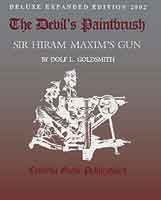
Maxim made the big move from America to England when he was just 41 years old. Even though he lived there for many years, he still held onto his American citizenship until 1899, when he became officially a British citizen. Later that year, in 1901, he received an important honor – a knighthood.
Maxim was born in Sangerville, Maine on February 5, 1840, to a family that had French Huguenot roots. At age 14, he became an apprentice coachbuilder and later took a job at his uncle’s machine shop in Fitchburg, Massachusetts, ten years after starting as an apprentice. Before running his own companies, Maxim worked as an instrument-maker and draughtsman. His early jobs taught him that he could be let down by workers, which would impact his expectations for future employees.
Maxim, who had been dealing with bronchitis for a long time, created two medical devices that he claimed could cure asthma, tinnitus, hay fever, and catarrh. His inventions included a small menthol inhaler that fit in a pocket and a larger “Steam Calming Device”, which used pine vapor to create steam. Despite being criticized for using his skills to sell fake medicines, Maxim argued that it was more shocking to invent something that could harm people than to invent something that could help others feel better.
The famous inventor and artist Thomas Edison was caricatured by Spy for Vanity Fair magazine in 1904. During this time, he came up with many creative ideas and inventions. He developed a special tool to make curls in hair called a curling iron. He also figured out how to demagnetize watches, making them work properly again. Additionally, Edison invented machines that could remove magnetism from metal objects. He designed tools to prevent ships from rolling on the water, as well as devices that made eyelets and rivets easier to use. He even worked on a type of weapon for airplanes called aircraft artillery. Another interesting invention was an aerial torpedo gun, which was meant to be used in the air. In his quest for innovation, Edison also created coffee substitutes and designed engines that used oil, steam, and gas as fuel sources.
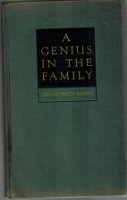
A big furniture factory had caught fire several times, so Maxim was asked for help to prevent future fires. As a result, Maxim created the first self-contained system that could put out small fires on its own and also alert the local fire station about the blaze. However, Maxim couldn’t find anyone else willing to buy this innovative idea, but once the patent expired, someone else picked it up.
Maxim made and put electric lights into a New York City office building (the Equitable Life Building) at 120 Broadway in the late 1870s. In 1878, he teamed up with Edward Weston to start a company called United States Electric Lighting Company so they could sell his light designs.
However, Maxim got caught up in several long-lasting patent disputes with Thomas Edison over who deserved credit for inventing the lightbulb. One of these cases involved the incandescent bulb, where Maxim believed Edison had gotten lucky because he understood patents better than anyone else. Maxim thought that an employee of his had falsely claimed to have invented the invention and that Edison proved this claim was false, which meant the invention would become public property. This would allow Edison to make the lightbulb without giving credit to Maxim as the real inventor.
The story behind the development of the Maxim gun is also interesting.
The image from the April 1895 edition of Cassier’s Magazine shows Hiram Maxim standing alongside Louis Cassier and J. Bucknall Smith with his famous Maxim gun. According to reports, Maxim said: “Back in 1882, I met an American friend while visiting Vienna. He told me that if you want to make a fortune, invent something that will allow Europeans to kill each other more easily.” As a young boy, Maxim was hit by a rifle’s recoil and this sparked his idea of using the force to automatically operate a gun. Between 1883 and 1885, Maxim patented different methods for operating guns, including gas-powered systems, recoil-operated mechanisms, and blowback designs. After moving to England, Maxim settled into a large house that used to belong to Lord Thurlow in West Norwood, where he worked on perfecting his automatic gun design. His design featured an action that would close the breech, compress a spring, and then use stored recoil energy to prepare the gun for its next shot. To avoid any potential accidents, Maxim took out ads in the local newspaper announcing that he would be testing his gun in his garden and asked his neighbors to keep their windows open so they wouldn’t shatter from broken glass.
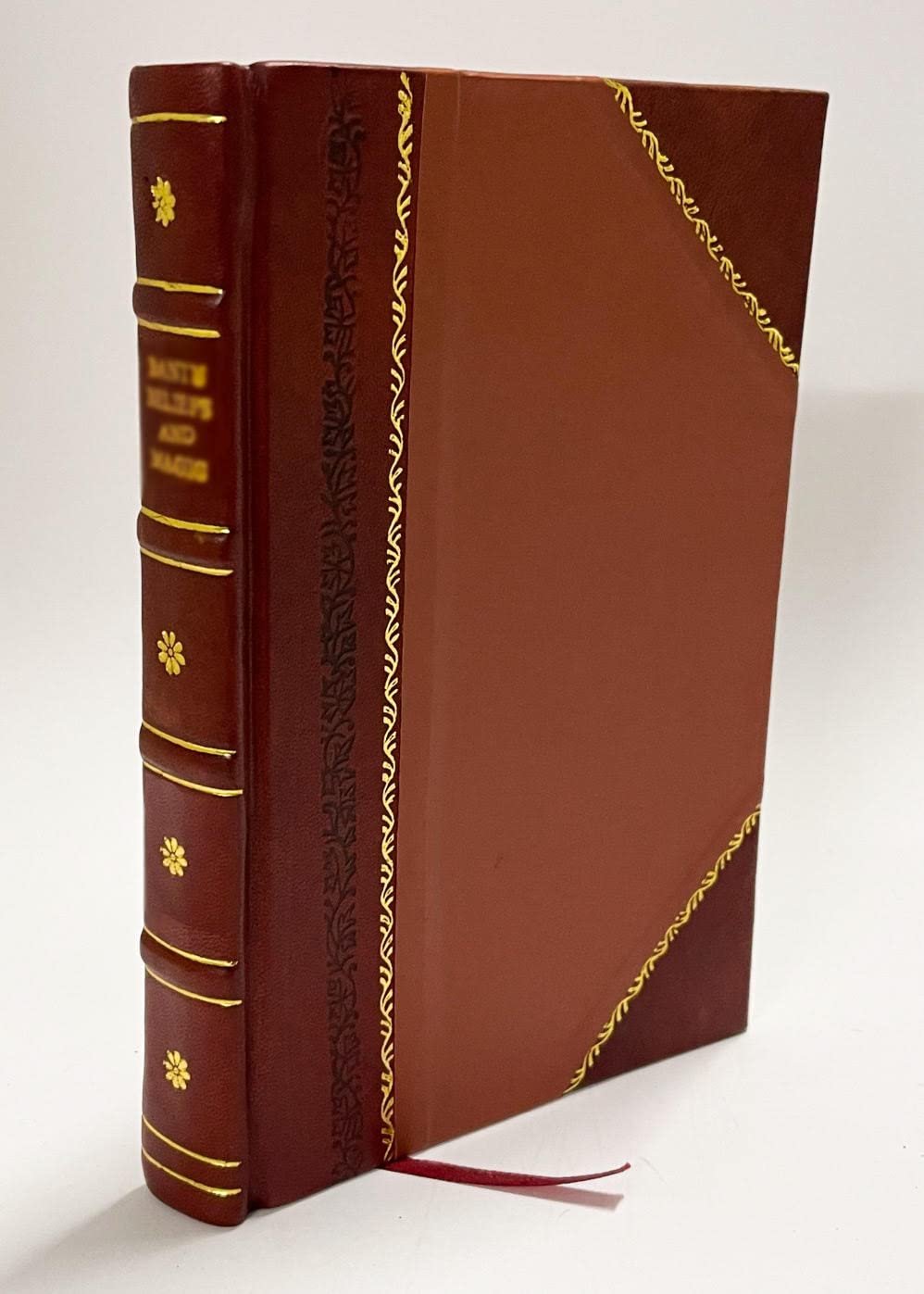
Maxim started an arms factory with funding from Edward Vickers in Crayford, Kent, where he made his machine gun. Later, it merged with Nordenfelt. In 1897, when Vickers Corporation bought part of the Barrow Shipbuilding Company, they created ‘Vickers, Son & Maxim’. After Maxim left the board on his 71st birthday in 1911, the company improved their version of the Maxim machine gun design, which became the standard British machine gun for a long time. The arms factory made a lot of money selling weapons to both sides during World War I, thanks to sales led by Basil Zaharoff. Many different versions of the Maxim machine gun were used and sold extensively by both countries during the war.
As Maxim grew older, he lost nearly all of his ability to hear because of damage that had built up in his ears over many years from being around loud guns.
Flying machines Maxim’s flying machine
Maxim’s dad had an idea for a helicopter powered by rotors that spun in opposite directions, but he couldn’t find a strong engine to make it happen. Hiram first drew up plans for a helicopter in 1872, but when he built his first “flying machine,” he chose to use wings instead. Before starting his design work, he conducted tests on the shape of wing sections and propeller designs. At first, he used a wind tunnel and later built a spinning arm test rig. Construction began in 1889 of a 40-foot-long boat with huge wings that weighed 3.5 tons. It was powered by two small engines that burned naptha and produced a lot of power to drive big propellers with diameters of 17 feet.
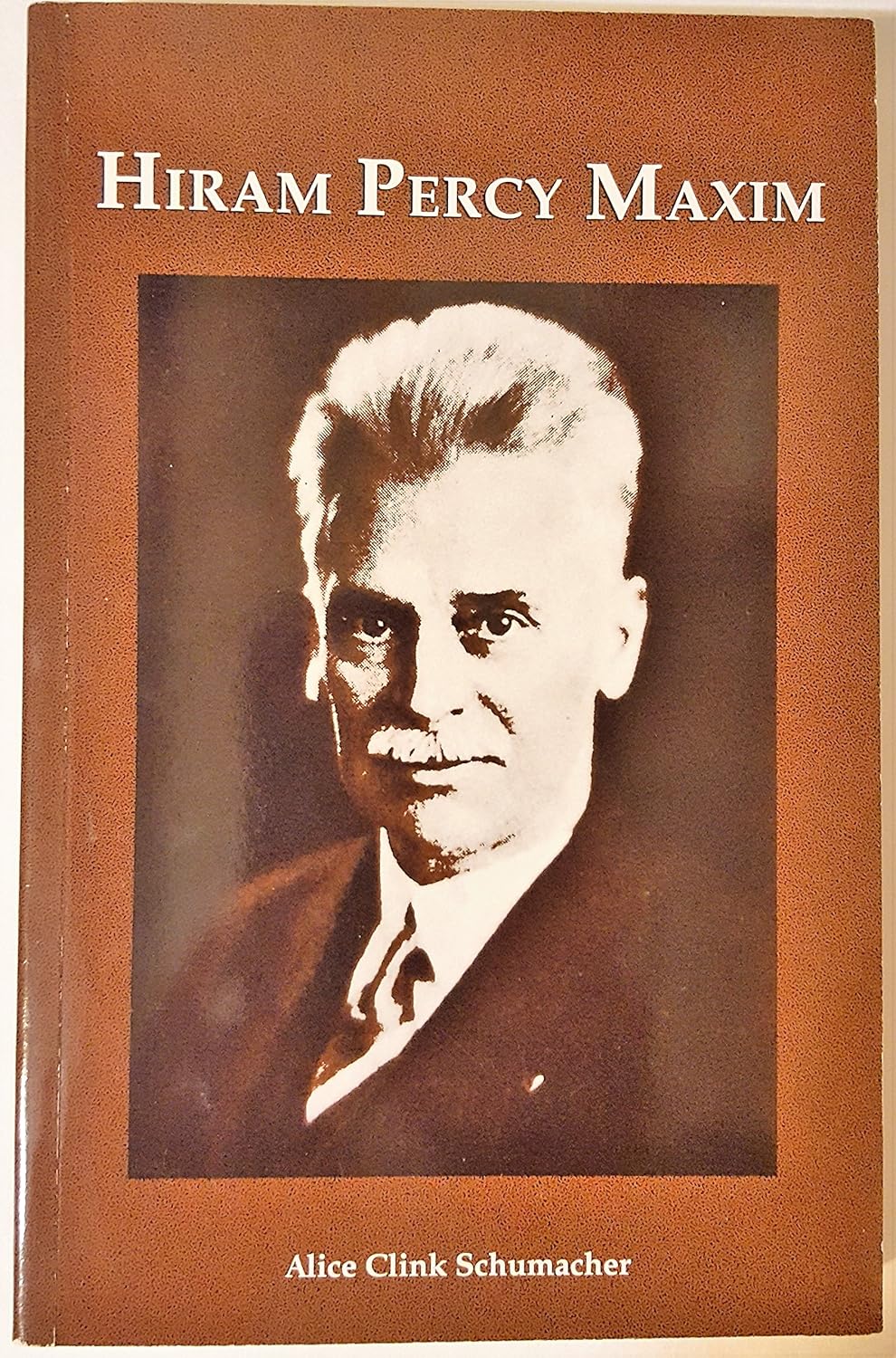
The idea behind this machine was to use it as a test rig. To do this, Maxim laid down an 1,800-foot long rail track at his home in Baldwyn’s Park Mansion, located in Bexley. Initially, the plan was to make the machine heavy by using cast-iron wheels, but after some trial runs, Maxim realized that wasn’t enough. Instead, he added four wheeled extensions called outriggers that were held down by wooden rails 13 feet away from the main track. In tests conducted in 1894, these outriggers worked as intended to keep the machine on the ground.
However, during its test run, something unexpected happened. The machine developed enough lift to take off, but at the same time, it pulled up the track. Luckily, the test was stopped just in time to prevent a disaster from occurring. After this close call, Maxim gave up working on his flying machine project and instead used what he learned to design fairground rides.
Looking back, Maxim realized that for a machine like his to fly successfully, it would need more powerful engines that are lighter in weight, such as those used in petrol combustion engines.
Captive Flying Machines were created by Sir Hiram Maxim as a way to fund his research on flight and gain attention for the idea of flying. In 1904, he built an amusement ride called “The Captive Flying Machine” that was showcased at the Earl’s Court exhibition. The ride used a special rig Maxim had designed for his experiments and consisted of a large spinning frame with cars attached to it. As the machine spun around, the cars would swing outwards through the air, giving riders a sense of flying. This early ride idea later became popular in the US with the introduction of the Circle Swing ride, which was inspired by Maxim’s original design.
Maxim was initially going to use simple aerodynamic designs on wings and foils so riders could control their flight, but this idea was banned because it was considered too dangerous. As a result, Maxim quickly lost interest in his project and gave up on it, saying that the ride was just “a big, fancy merry-go-round”. Despite this, his company built several more rides of different sizes at The Crystal Palace and various seaside resorts such as Southport, New Brighton, and Blackpool, which all opened in 1904. At first, Maxim had only planned to build two rides, but a major malfunction on the original ride forced him to make more to ensure the business would be profitable. He even had ideas for further modifications, but he eventually lost enthusiasm for the amusement industry and never brought those plans to life.
Even though the whole project didn’t work out as planned, the rides were really well-known and respected in the amusement park industry. The Blackpool ride still exists today as part of the Pleasure Beach amusement park, which has become even more historic over time. It’s also one of the oldest operating amusement rides in Europe, along with the park’s famous river caves. The Flying Machines has remained almost exactly the same since Maxim first designed it. People usually call the Blackpool ride just “The Flying Machine” or “Flying Machines”, but at the entrance, you’ll see the full name: Sir Hiram Maxim’s Captive Flying Machines.
In 2001, Disney California Adventure Park opened its doors with a brand new attraction called the Golden Zephyr. This modern version of an old ride was created by combining elements from another famous ride at Blackpool. Unlike its larger counterpart, the Golden Zephyr has smaller cars that swing out at a much narrower angle. To get inspiration for their design, Disney engineers traveled to Blackpool to visit and study the Maxim ride, which is the only remaining example of both versions.
Maxim started a new company in 1911 called Grahame-White, Blériot, and Maxim Company. The company was formed with two famous pilots, Grahame and Blériot, and a big investment of £200,000. Maxim had hoped to create planes that could fly reconnaissance missions or drop heavy bombs, but his health problems and financial issues from other businesses stopped him from working on this project before he passed away.
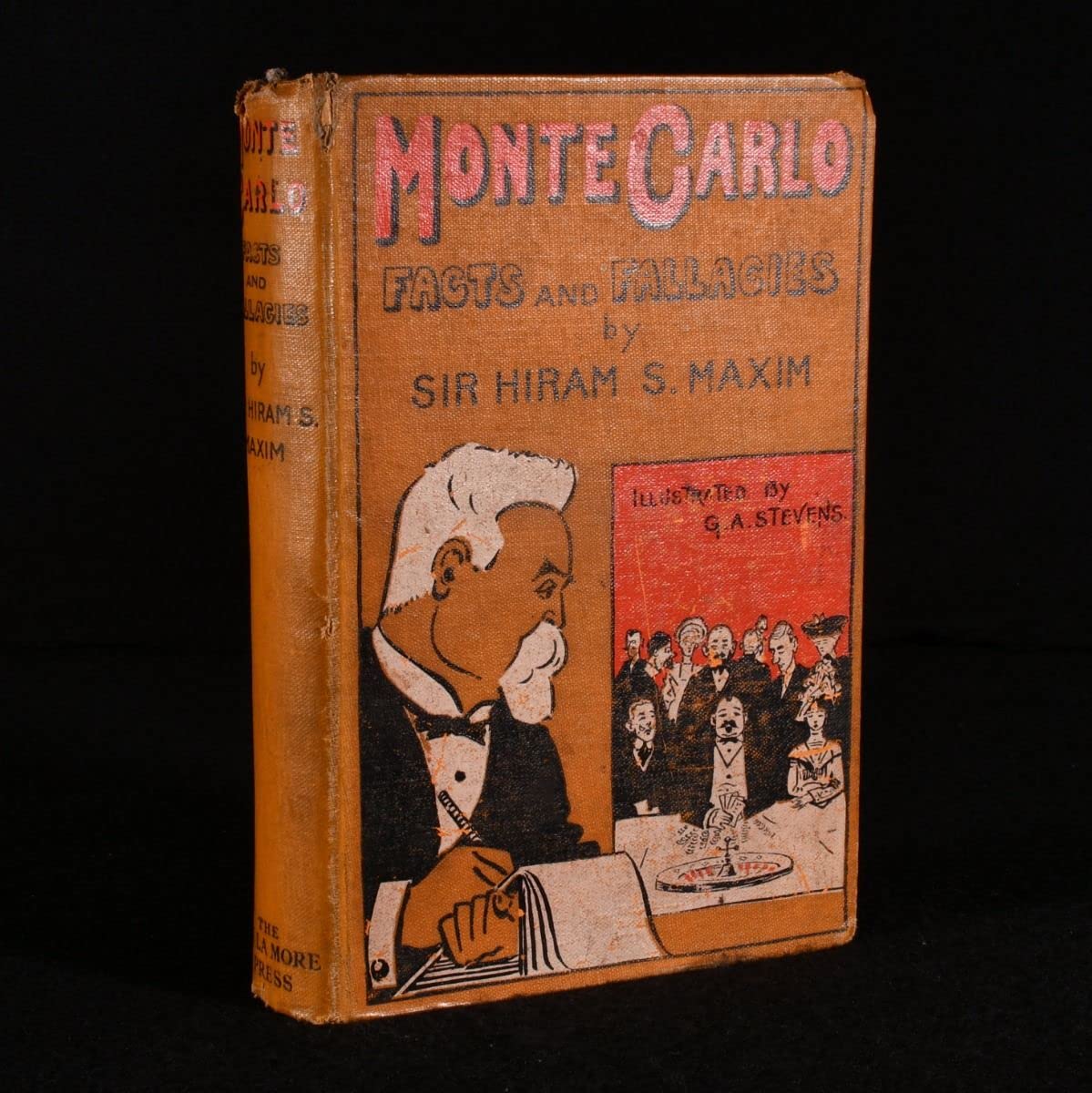
Maxim, an engineer who didn’t believe in God, also worked on a book called Li Hung Chang’s Scrapbook. This book was meant for Li Hung Chang and aimed to explain why Chinese people were confused about how they could build advanced technology like trains and ships while believing in supernatural things that seemed ridiculous to them. Maxim didn’t think much of the European missionaries who came to China, as explained in his scrapbook. He wanted to show that he wasn’t one of those foolish people. His book had 400 pages with 42 pictures and talked about important topics like what Christianity is really about; how it affects people living in China; and why miracles are hard to believe. The book also discussed the impact of the Bible on European and American societies. Maxim ended his scrapbook by asking missionaries some tough questions and explaining why their ideas didn’t work well in China.
Honours Maxim was a prestigious holder of the Legion of Honour award, as well as a skilled engineer in civil, mechanical, and electrical fields. He was also a respected business leader who was part of the London Chamber of Commerce. Additionally, he held memberships in several prominent scientific organizations, including the Royal Institution, the British Association for the Advancement of Science, and the British Empire League. Furthermore, Maxim was recognized by his peers as a Fellow of both the Royal Society of Arts and other esteemed groups.
Arrival in Britain and knighthood In 1881, Maxim moved to Britain to oversee the London offices of the United States Electric Lighting Company. Over time, his trips back to the U.S. became less frequent, and on September 16, 1899, Maxim officially became a British citizen. The following year, Queen Victoria gave him a special honor: knighthood. But before he could accept it, Victoria passed away on January 22, 1901. As a result, her successor, Edward VII, awarded the title to Maxim at Marlborough House on February 9, 1901.
The gravestone of Sir Hiram Maxim tells us about his life. When he passed away at home in Streatham, London on November 24, 1916, he was 76 years old. His final resting place is West Norwood Cemetery in south London, where he’s buried with his wife and their grandson, Lieutenant Colonel Maxim Joubert.
Hiram Maxim’s family life was marked by a complicated relationship with his brother, Hudson Maxim. Both were skilled inventors, but they worked together until a dispute over a patent for smokeless powder drove them apart. The issue involved Hiram claiming that he had received the patent under the name ‘H. Maxim’ in Europe, while his brother’s work was recognized as his own in the US. Despite their professional differences, Hudson was an accomplished businessman and successfully sold arms in America, causing jealousy in Hiram. As a result of this competition, the brothers developed a deep rift that would last for the rest of their lives.
Hiram Maxim wed his first wife, Jane Budden from England, in Boston, Massachusetts, on May 11th, 1867. Their kids were: Hiram Percy Maxim; Florence Maxim, who married George Albert Cutter, and Adelaide Maxim, whose husband was Eldon Joubert, a man who worked for famous pianist Ignacy Jan Paderewski. By 1875, the family relocated to Fanwood, New Jersey, with Hiram joining them on weekends.
His son Hiram Percy Maxim followed in his father’s and uncle’s footsteps to become a mechanical engineer and weapons designer, but he’s most famous for his early experiments with amateur radio and founding the American Radio Relay League. He invented a device called the “Maxim Silencer” to reduce noise, but unfortunately, it came too late to help his dad recover from hearing loss. Hiram Percy later wrote a book about his father, titled A Genius in the Family, which shares around 60 stories about their time together when he was young (until he was about 12 years old). Most of these brief tales are fun and give readers an inside look at the family’s personal life through a child’s eyes. A movie called So Goes My Love, based on these memoirs, was released in 1946 with actors Don Ameche and Myrna Loy starring in it.
In 1881, Hiram Maxim tied the knot with Sarah, who was both his secretary and his lover. Sarah came from an important family – her dad, Charles Haynes, was from Boston. The exact details about their divorce before the marriage are unclear. Later on, in 1890, they got remarried in London, specifically in Westminster.
Helen Leighton was a woman who took legal action against Maxim, saying that he married her in 1878 and that he was intentionally having children with his wife, Jane Budden, while she was still married. She also claimed that Maxim had a child named Romaine, which she believed was hers. However, the case was eventually dropped after being settled for a small amount of money (less than $1,000) instead of the original amount requested ($25,000). As a result, Maxim avoided any public scandal from the incident. In 1898, Helen Leighton brought new charges against Maxim in Poughkeepsie, New York, accusing him of bigamy and abandonment. Years later, when Maxim passed away, he left behind a significant sum of money – around £4,000 – to someone named Romaine Dennison, who might have been the child that Helen Leighton claimed was his.
Leave a Reply